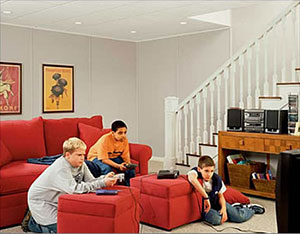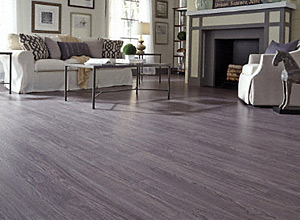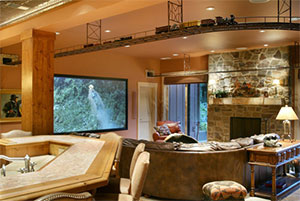Turning Your Basement into a Living Space
by Lauren Busser The House Designers’ Editorial Director
Basements can be a great way to optimize your living space. These large concrete spaces beg to be put to good use and can function in many ways. The great thing about including a basement in your plan is that while you are building your home you don’t need to commit to finishing it right away. You can always go back and finish it later as your family grows or you simply want more living space. When it comes to your basement there are a few essential tips for finishing it correctly so that the space is functional and manageable.
Finished basements are a great way to add additional living space to a home but they also present a challenge. While an unfinished basement is a clean slate, it is also cooler, more humid, and prone to moisture than any other part of your home and has plumbing and mechanical equipment that needs to be concealed. You can cover them with drywall but if a piece of equipment fails then it can become difficult and costly to access.
That’s where basement finishing systems come in handy, such as the Owens Corning® Basement Finishing System™. This system utilizes fiberglass insulation and creates insulated walls that breathe and won’t trap moisture, resulting in a warm and quiet space. The walls are also designed to be removed to let you access your foundation or plumbing.
With that peace of mind you are free to create any space you want in your basement—from a new home office to a man cave or rec room but as you furnish your basement you'll want to take a few other things into consideration.
Flooding is a concern when it comes to the basement so you want to make sure that you have a system in place to deal with water or be sure that the basement flooring is made of a material that will handle flooding and moisture well, or simply consider keeping your concrete floors. The best advice is to do a little research while selecting the type of flooring you will install in your basement. Doing so will help you avoid having to tear up your flooring in the wake of a flood.
Floor drains are one way that you can combat basement moisture and flooding. Ideally it should tie into a storm drain directly or drain into a basin with a sump pump. Installing these systems now will help you save on replacing furniture, rugs or appliances later.
In addition to recessed indirect lighting you can also light your basement with task lighting. This
LAMPS PLUS® living room uses a floor lamp and regular lamp to add a little bit of extra lighting to the room.
Lighting is another critical component in making the basement a living space. Basements usually don't get a lot of natural light, but there are a few ways to combat this.
Since many building codes require that there be a second way to exit a finished basement, you can install an egress window and a window well to let in a little more natural light. An egress window is big enough for a person to exit through and will also let more natural light into the basement.
When it comes to finishing your basement you should consult a contractor, particularly if you are considering any plumbing or additional electrical work that may need to be done. Your contractor can guide you through the best options for your finished basement and help you turn your basment into your dream living space.
Some house plans take full advantage of the basement level. For example,
The Tasseler house plan has a living area that is bordered by two unfinished basement sections.



.png)
.png)





